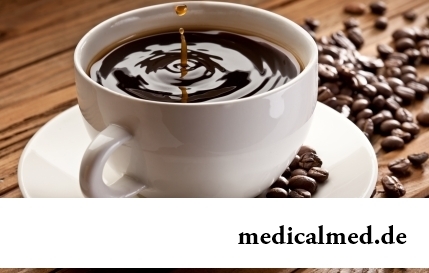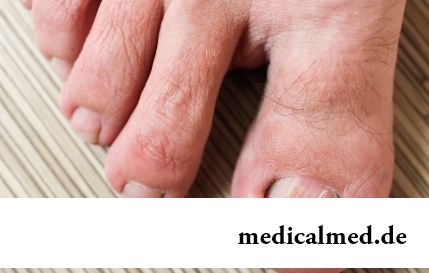





Klomipramin
Application instruction:
Klomipramin – antidepressant with psychogogic, sedative and timoleptichesky action.
Form of release and structure
Dosage form – tablets, coated: round, yellow color, on one of the parties marking "25" (on 10, 20, 30 or 50 pieces in polymeric banks; on 10, 20, 30 or 50 pieces in blisters, in one packaging there can be 10, 20, 30, 40, 50, 60, 80, 90 or 100 tablets).
Active ingredient: a klomipramina a hydrochloride – 25 mg.
Excipients: microcrystallic cellulose, silicon dioxide colloid, croscarmellose sodium, magnesium stearate, gipromelloz, titanium dioxide, monohydrate of lactose, macrogoal, dye ferrous oxide yellow.
Indications to use
- Depressions of various genesis: organic, neurotic, larvirovanny, reactive, involutional and endogenous forms;
- The depressions caused by chronic somatopathies or a chronic pain syndrome;
- Depression at schizophrenia and a psychopathia;
- Presenile and senile depression;
- Obsessivno-kompulsivnoye frustration;
- Panic frustration;
- Phobias;
- The cataplexy accompanying a narcolepsy;
- Night enuresis at children is more senior than 5 years and teenagers.
Contraindications
Absolute:
- Children's age up to 5 years;
- Alcoholism;
- Recently postponed myocardial infarction;
- Inborn syndrome of lengthening of a QT interval;
- Concomitant use with monoamine oxidase inhibitors and within 2 weeks after their cancellation;
- Lactation (or feeding should be stopped);
- Hypersensitivity to components of drug or other dibenzazepines.
Relative:
- The lowered convulsive threshold;
- Serious illness of livers/kidneys;
- Pheochromocytoma;
- Neuroblastoma;
- Hyper thyroidism;
- Diabetes mellitus;
- Simultaneous use of steroid hormones.
There are no reliable data and clinical tests concerning safety of use of Klomipramin during pregnancy therefore during this period of life of the woman drug can be appointed only if the expected advantage of therapy exceeds potential risks for pre-natal fetation.
Route of administration and dosage
Klomipramin it is necessary to accept inside in time or after food.
In each case the therapeutic dose is selected the doctor individually.
To adult patients, as a rule, appoint on 1-2 tablet 2-3 times a day. The most admissible daily dose of a klomipramin of a hydrochloride makes 250 mg (10 tablets), at use in the conditions of a hospital – 300 mg (12 tablets).
The initial dose for children makes 1-2 tablets a day. The most admissible daily dose for children is more senior than 10 years – 3 mg/kg, but no more than 200 mg of a klomipramin.
Side effects
- Central nervous system: often – a tremor, increased fatigue, a headache, vision disorders, a myoclonus, dizziness; seldom – feeling of heat, disturbance of flavoring feelings, a disorientation, agitation, a condition of alarm, a mydriasis, aggression, a mania, a hypomania, disturbances of concentration of attention, memory disturbance, yawning, dreadful dreams, sleep disorders, a sonitus, a delirium, depersonalization, hallucinations (are most probable at elderly people and patients with parkinsonism), disturbances of the speech, strengthening of a depression, an ataxy, disturbances of a muscle tone, paresthesia, a spasm; in some cases – glaucoma, strengthening of psychotic symptoms;
- Cardiovascular system: seldom – changes of the electrocardiogram, increase in arterial pressure, arrhythmia, sinus tachycardia, postural hypotension, palpitation; in some cases – disturbances of cordial conductivity, change of the electroencephalogram;
- Alimentary system: often – a lock, dryness in a mouth, nausea; seldom – unpleasant feelings in a stomach, anorexia, diarrhea, vomiting, increase in activity of transaminases; in some cases – jaundice, hepatitis;
- System of a hemopoiesis: in some cases – an eosinophilia, thrombocytopenia, a Werlhof's disease, an agranulocytosis, a leukopenia;
- Metabolism: often – appetite strengthening, increase in body weight;
- Endocrine system: often – increase in chest glands, a galactorrhoea, disturbances of a libido and a potentiality; in some cases – hypostases, a syndrome of inadequate secretion of antidiuretic hormone;
- Dermatological and allergic reactions: seldom – an itch, skin rash, a photosensitization;
- Others: often – sweating strengthening; seldom – fervescence.
Special instructions
Before Klomipramin's appointment control of arterial pressure, during treatment – a picture of peripheral blood is necessary, at prolonged use – function of heart and a liver.
The patients inclined to suicide acts, during therapy, especially in an initial stage, have to be under constant medical control.
Use of an electroshock during treatment klomipraminy is possible only according to strict indications and under careful observation of the doctor.
Drug cannot be cancelled sharply as there is a risk of development of a withdrawal.
During treatment it is forbidden to take alcoholic beverages, it is necessary to refrain from control of vehicles and performance of potentially dangerous types of the works demanding the speed of reactions and special attention.
Medicinal interaction
Klomipramin it is not necessary to apply along with hinidinopodobny antiarrhytmic means, and also sympathomimetic drugs, such as Epinephrinum, ephedrine, изопреналин, Norepinephrinum, Phenylephrinum, фенилпропаноламин.
In need of simultaneous use of Disulfiramum or an alprazolam it is necessary to lower a dose of a klomipramin.
Possible reactions of interaction in case of the combined use of Klomipramin with other medicines:
- The drugs exerting the oppressing impact on the central nervous system: considerably the oppressing and hypotensive action amplifies, respiratory depression is possible;
- Anticholinergics (fenotiazina, atropine, antihistamines): their pharmacological action amplifies;
- The anti-adrenergic drugs influencing neyronalny transfer of excitement (a clonidine, гуанетидин, Reserpinum, бетанидин, alpha Methyldopum): decreases or completely their anti-hypertensive action is eliminated;
- Monoamine oxidase inhibitors: risk of development of a myoclonus, hyper pyrexia, generalized spasms, hypertensive crisis, delirium and coma;
- Ethanol: its action, especially in the first days of therapy klomipraminy amplifies;
- Neuroleptics: concentration of a klomipramin in a blood plasma increases, the threshold of convulsive readiness decreases, spasms develop;
- Thioridazine: the risk of the toxic influence on heart which is shown heavy arrhythmias increases;
- Barbiturates: concentration of a klomipramin in a blood plasma decreases;
- Selective serotonin reuptake inhibitors (for example, флувоксамин, fluoxetine), адеметионин, noradrenaline: the risk of development of a serotoninovy syndrome (between administrations of drugs it is necessary to take at least a 2 weeks break) increases; флувоксамин and fluoxetine can increase concentration of a klomipramin in a blood plasma that leads to development of the corresponding side effects;
- Adreno-and sympathomimetic means (Epinephrinum, Norepinephrinum, ephedrine, Phenylephrinum, изопреналин, including in cases when these substances are combined with local anesthetics), medicines with high linkng with proteins (digoxin, warfarin): their action on cardiovascular system amplifies;
- Sodium Valproatum, carbamazepine, пароксетин: concentration in a blood plasma of a klomipramin and its main metabolite of a dezmetilklomipramin increases;
- Cimetidinum, erythromycin, haloperidol: concentration of a klomipramin in a blood plasma increases;
- Estrogen: metabolism of a klomipramin is broken;
- Inductors of P450, CYP3A and CYP2C cytochrome (rifampicin, phenobarbital, tobacco smoking): removal of a klomipramin from an organism accelerates, its efficiency decreases.
Terms and storage conditions
To store in the place protected from children at the room temperature (to 25 º).
Period of validity – 3 years.
The most high temperature of a body was recorded at Uilli Jones (USA) who came to hospital with a temperature of 46,5 °C.

Sooner or later hair turn gray at all. Many people try to hide these changes, returning natural color of the hair with the help about...
Section: Articles about health
Musicotherapy – a treatment method which caused and causes a set of a controversy concerning its efficiency. However the facts are relentless: during the numerous researches curative impact of music on an organism was scientifically confirmed. Since then in a number of the countries a method...
Section: Articles about health
Turnip, radish, horse-radish – once these and other products enjoyed wide popularity at our ancestors, being not only the food sating an organism but also the medicines curing of many diseases. Unfortunately, the use of some of them got out of fashion long ago, and once favourite plants and vegetables almost ceased to make a contribution to human health. Inclusion of such products in a modern diet − an effective measure of prevention and treatment of diseases which seldom suffered...
Section: Articles about health
Frosty air, fresh wind and easy snowball at most of Russians are associated with cheerfulness, health and cheerful entertainments, on to...
Section: Articles about health
About influence of fasting days on an organism it is told much – both about advantages, and about shortcomings. It is considered that fasting day in the form of a short-term monodiet is useful, promoting effective removal of slags from an organism whereas irregular, it is excessive п...
Section: Articles about health
Summer in the heat. Many are going to spend vacation abroad. Travelers the tender seas, rest on beaches wait, for sightseeing, campaigns on natural and cultural reserves. But, unfortunately, on vacation also problems with health can wait for us. On a foreign trip it is possible to face also diseases which not only will spoil long-awaited issue, but also will force to be treated within long months after its termination. To be insured completely from troubles of it a sort...
Section: Articles about health
Feeding by a breast - the integral part of ideal motherhood allowing to come into contact with the kid and to create since early years...
Section: Articles about health
Subfebrile temperature call fervescence to 38 degrees, and subfebrile condition - existence of such temperature over 3 days, and quite often it happens without the visible reasons. Existence of subfebrile condition - a strong indication of disturbances in an organism which can...
Section: Articles about health
All like to sing. Small children with pleasure are engaged in a vocal, not especially thinking of hit in a melody. Adults most often hesitate, being afraid to show lack of talents in this area, and it is vain: singing is very useful for health....
Section: Articles about health
Traveling all over the world, many try to try the most exotic dishes of national cuisines. Exists even so-called died away...
Section: Articles about health
Healthy lifestyle today in fashion, and many parents think of that the child from the early childhood played sports. Trainings will help it to become strong and hardy, will improve coordination of movements, and also will exert positive impact on mentality: it...
Section: Articles about health
For anybody not a secret that the modern person eats not as his ancestors. For the last 100 years in broad access there were absolutely new products which are result of use of the latest technologies in food production. Significantly ways of storage and transportation of food ingredients changed, and people of the whole world had an opportunity to regularly use those products about which their grandfathers and grandmothers did not even know....
Section: Articles about health
Nightmares belong to the most unpleasant frustration. Statistically, they happen at 4% of adults, and almost at 70% of children and...
Section: Articles about health
The pine is one of the most widespread plants of our woods. Its needles and pitch not without reason called by "gallipot" were since ancient times used for strengthening of protective forces of an organism, treatment of avitaminosis, anemia and many other diseases. In recent years wide п...
Section: Articles about health
The number of long-livers is very small. One person from 5 thousand lives up to age of 90 years, and the centenary boundary steps over only one of 20 thousand. However, doctors claim that each of us is quite able to affect own destiny. At the same time it is not so much about living as long as possible, how many about an opportunity to keep physical and intellectual activity and to avoid decrepitude. We will also talk about the ways helping to achieve this result today....
Section: Articles about health
What woman does not dream of a beautiful and thick hair? So far physicians developed difficult schemes on hair transplant, in the bet industry...
Section: Articles about health
The medicine promptly develops, and the fact that else quite recently it seemed by miracle can now. We are not surprised any more to the fact that people with artificial joints and extremities can play sports, organ transplantation became a routine, and the latest cancer medicine п...
Section: Articles about health
Each of us faces from time to time that other people need the immediate help. We react to it differently: one at once call doctors and police, others rush to victims and try to save them independently. Some pass by at all … Certainly, desire to help the neighbor who got into trouble, quite naturally for any decent person. However not everyone understands that to work in a similar situation, being guided by exclusively good...
Section: Articles about health
For many women the word "fat" sounds as a sentence. In aspiration to an ideal figure they try to exclude, first of all, from with...
Section: Articles about health
For the person who daily since morning gathers for work it is very important to wake up vigorous and ready by day of work. Actually, each of us experiences difficulties with this, at first sight, simple business from time to time. On a condition of an organism after ночн...
Section: Articles about health
Partial and the more so full loss of hearing significantly reduces quality of life. Difficulties with communication lead to loneliness and isolation. The person who badly hears experiences difficulties with social and professional implementation, quite often has problems in private life....
Section: Articles about health
Coffee – favourite drink of many. For the last decades it more than once already declared very harmful, extremely useful and even...
Section: Articles about health
In consciousness of our many compatriots idea that folk remedies if are no more effective, than medicinal "chemistry" strongly took roots, then are precisely less harmful. Unfortunately, it is not always fair: some receptions treating...
Section: Articles about health
The summer of this year in Russia was very ambiguous. Regions suffered from a merciless heat, from pouring rains, the hail from time to time dropped out, then there was again a heat which alternated with rainfall again. Many people suffer from such sharp changes of weather. Even flu epidemics and a SARS were recorded....
Section: Articles about health
Iodine - one of thirty most important microelements in our organism. The main role of iodine consists in synthesis thyroid гормо...
Section: Articles about health
According to doctors, more than a half of men of 25-50 years suffer from frustration of the urinogenital sphere, but the minority sees a doctor from them. And in vain - even the insignificant discomfort in the field of generative organs can serve as a symptom of an illness fraught heavy посл...
Section: Articles about health
The healthy nutrition is the invariable principle of health and good health for long years of the woman. Nevertheless, in a diet at each stage of life there are the features allowing to support an organism by those substances which are most necessary for it at present. Eating according to them, the woman will be able to feel vigorous and strong, and also to adapt to changes in an organism so that they allowed it to lead active lifestyle at any age....
Section: Articles about health
